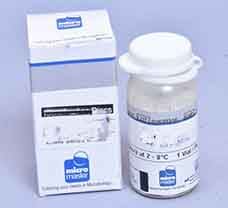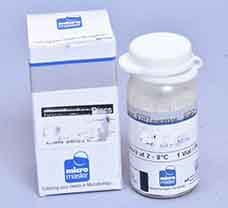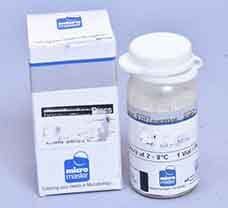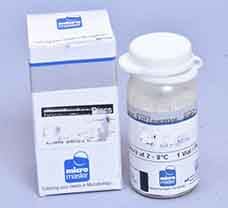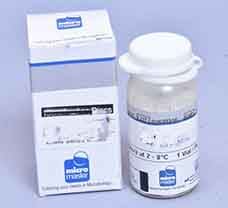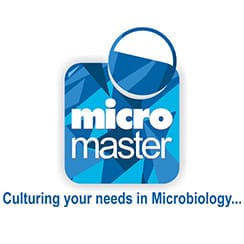
Vogel-Johnson Agar Base w/o Tellurite -100g
- Brand: Micromaster
- Catalog No.: DM462-100g
- Quantity/Unit: 100g/Pack
- Usually Shipped in: 1-2 Weeks
For lab/research use only, unless otherwise specified
Vogel-Johnson Agar Base w/o Tellurite is supplied by Micromaster. It is available in the form of a light yellow to pink homogeneous free flowing powder which has a pH in the range of 7.0 to 7.4. It is advisable to store this product below 30C.
Quantity provided: 100 g/pack
Vogel-Johnson Agar Base (V.J. Agar) with addition of potassium tellurite is recommended for selective isolation of coagulase positive, mannitol fermenting Staphylococcus aureus from heavily contaminated foods and clinical specimens. Staphylococcus aureus, a gram-positive, spherical bacterium, is a common contaminant in pharmaceutical and cosmetics products. Vogel-Johnson Agar is prepared according to the formula devised by Vogel and Johnson and is recommended for the microbial limit test in USP. Originally it was developed by Zebovitz, as a Tellurite Glycine Agar, a selective medium for the detection of coagulase-positive Staphylococci. Vogel-Johnson modified the medium in 1960 by the addition of phenol red as a pH indicator and by increasing the quantity of mannitol. Selection and differentiation of coagulase-positive staphylococci on V.J. Agar is based on mannitol fermentation and tellurite reduction. Casein enzymic hydrolysate and yeast extract provide nitrogenous compounds, vitamin B complex and other growth nutrients. Dipotassium phosphate provides buffering to the medium. During the first 24 hours of incubation, contaminating organisms are almost inhibited by tellurite, lithium chloride and high glycine content. The effect of inhibitors on S. aureus is reduced because of the presence of mannitol and glycine. Coagulase-positive Staphylococci reduce potassium tellurite to metallic free tellurium and thus produce black colonies surrounded by yellow zones. This yellow colour is due to phenol red indicator that turns yellow in acidic condition due to the fermentation of mannitol. If mannitol is not fermented, yellow zones are not formed.






